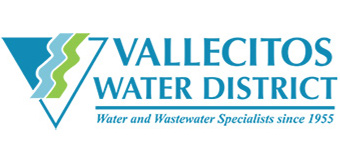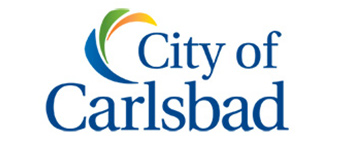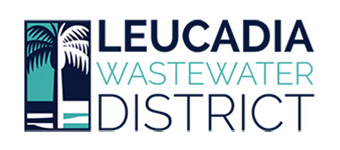Biosolids Use
In the past, solids removed by the wastewater treatment process were dewatered using belt filter presses to produce class B biosolids, which were approximately 16% solids. This heavy material was hauled to Arizona and applied to farmland used to grow crops for nonhuman consumption.
In 2009, EWA completed its Phase V plant upgrade, which included implementation of heat drying technology that produces Class A biosolids. Class A biosolids have unrestricted use, which provides EWA with more options for reuse of the product. The new processes are described below.
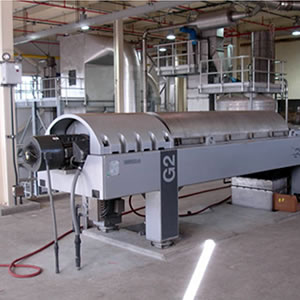
Dewatering & Drying
After 15-20 days in the digesters, wastewater solids are pumped to the dewatering building for additional treatment. The EWPCF utilizes Alfa Laval centrifuges (which spin the solids) to remove excess water. The resultant product, which is approximately 23% solids, is considered Class B biosolids.
Solids from the centrifuges are then pumped to an Andritz DDS 40 rotating drum dryer. The dryer has a large furnace at the front that can be fueled by natural gas or by methane gas produced by the digesters. This heats the solids to approximately 200˚F, which drives off moisture and kills pathogens. The heat drying process produces pellets that are >90% solids and are considered Class A Biosolids
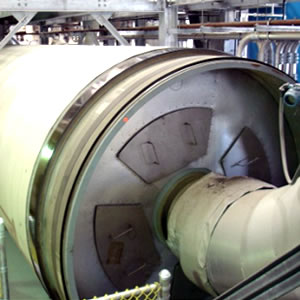
Sorting & Storing
Pellets from the dryer are then dropped from a hopper into a shaker screen for sizing. Rejected pellets are recycled back into the dryer, while those of the correct size go through a pellet cooler and are then transferred into storage silos. The pellets are sprayed with Camelina oil for dust control and are then loaded into trucks to be transported to their final destination.
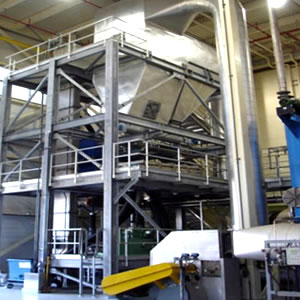
Clean, Dry Material
The biosolids pellets produced by the heat drying process consist of a clean, dry, stable, granular material. They are a renewable resource that can be used as a biofuel or an organic fertilizer. As a biofuel, they have a heating value that is about 60% that of coal. As a slow release fertilizer, they have a Nitrogen-Phosphorous-Potassium (NPK) value of 5-6-0.
The EWPCF produces about 6,000 tons per year of biosolids pellets. Initially, all of the material was hauled to the CEMEX cement kiln in Victorville, California for use as a biofuel. EWA subsequently began marketing the biosolids as a fertilizer and now sends a large percentage to nurseries, golf courses and soil blenders.
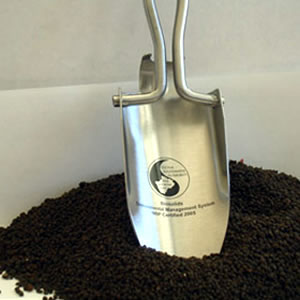
Measurable Savings
Implementation of the heat drying process has greatly reduced EWA’s costs for biosolids disposal. In the past, 4-5 truckloads per day of biosolids were hauled to Yuma. Now, due to the reduction in volume, only one truckload leaves the EWPCF each day. In addition, EWA is generating revenue from the sale of PureGreen fertilizer. As a result, the total savings is about $2 million per year.

